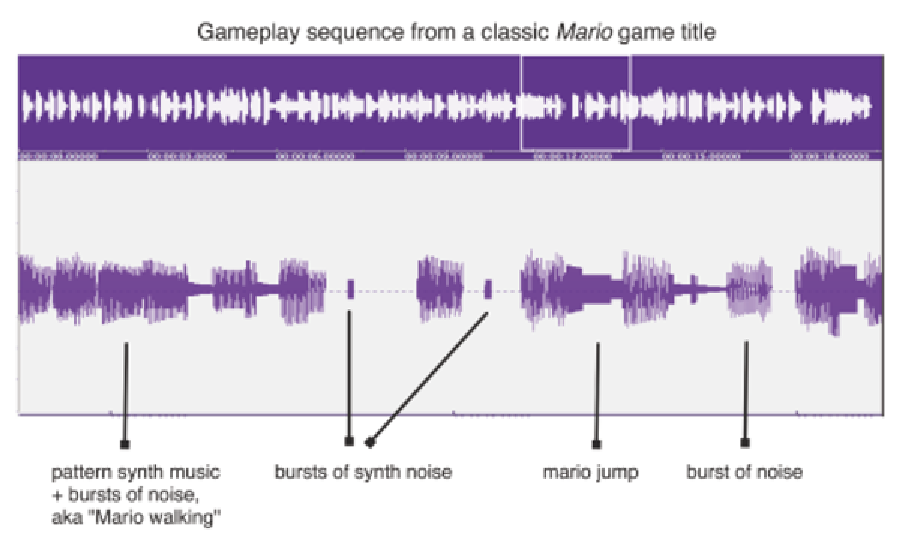Information Technology Reference
In-Depth Information
the completely un-real soundscapes it produced.
From here we have the tradition of
chiptunes
: 8-bit
synth tunes encoded directly on the microchip of
the game console. Initially, of course, space and
memory were some of the pragmatic issues driving
the minimalistic and synth-based soundscapes in
games. With technological improvements, such
constraints are no longer relevant, however the
demographic of game sound practitioners still
exerts a formative role not on what is
possible
but on what is
realized
in game sound today and
how associations between sounds and their mean-
ings in a game become forged. As Deutch puts
it, even though game sound emulates film sound
in its “filmic reality” of representation, it is often
too literal—“sound effects as opposed to sound
design” (p. 31) —see Figure 1.
Invoking what Schafer (1977) might call the
listener as composer
, many games today utilize
adaptive-interactive audio, that is, each player
constructs her own unique soundscape by moving
and interacting with their avatar. Yet even then
sound effects are “loopy”: they often come from
generic sound banks, (see Figure 3) and are ex-
actly the same each time they sound, sometimes
getting cut off if the player's actions are faster
than the sound file's duration. They get called up
and filtered according to the spatial/contextual
demands of the character's progression, however,
it is only in high-end games, typically in first-
person shooters (FPS) where the richness of a
complex soundscape really comes through with
3D audio rendering and spatialization (Grimshaw,
2008) to account for acoustic coloration and at-
mospheric variables. FPS games afford the
player the unique position of literally listening
with the character's ears since the game presup-
poses the player is that character. Any other POV
(point of view) character stance by definition
distances the player from the soundscape, making
Figure 1. Note the compressed, repetitive nature of the waveform, reflecting synthetic strings of sounds,
often separated by little sine tone clicks and artificial silences

Search WWH ::

Custom Search